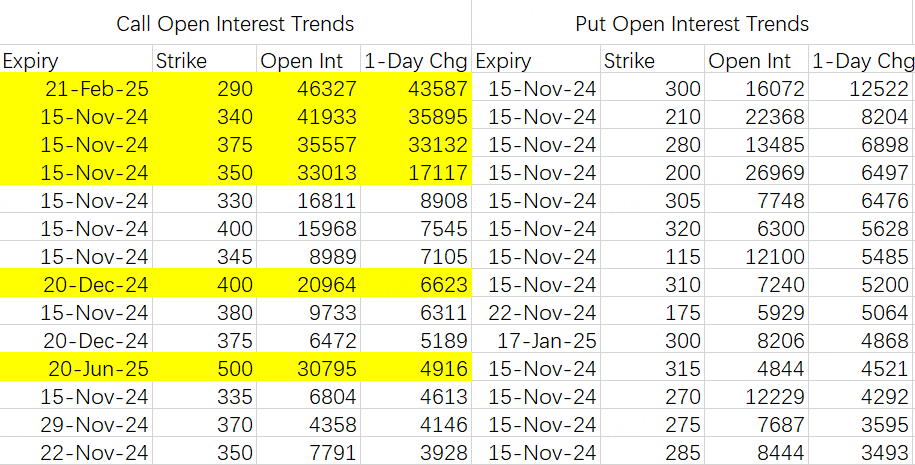Was the option strategy shared last week of buying calls and selling puts effective?
This method is not only convenient for entry, but also for exit. With TSLA trading up to $340 pre-market, many are likely looking to take profits. For stock positions, the exit is simply reducing share size. For call options, the exit is rolling - closing out your long calls and re-opening cheaper, higher strike calls.
Many option buyers either hold through pullbacks, seeing profits erode or even losses, or they just outright close positions leaving further upside on the table.
To avoid these two scenarios, relying on mental fortitude alone is insufficient. Preserving capital while compounding gains is the wiser approach when speculating.
Which call options would be considered "cheaper"? Those with nearer-dated expirations or higher strike prices relative to your current long position.
For example, if I bought the $330 calls last week ($TSLA 20250117 330.0 CALL$ ), at the open I could roll that position into the $400 calls with the same January 17th expiration ($TSLA 20250117 400.0 CALL$ ).
Another roll approach is choosing calls with nearer expirations like the November 29th $350 strikes ($TSLA 20241129 350.0 CALL$ ).
There are nuanced differences between the two methods, but I typically prefer keeping the same expiration and just adjusting the strike higher.
While I routinely share institutional strike ranges for covered call selling, I personally avoid outright call sales given how many times Elon has run through those strikes this year alone.
Most will recall the explosive TSLA rally on Independence Day - Elon's ability to meme outweighs all. If the man wants to keep dishing out fireworks shows, I'm happy to play along.
As expected, last week's institutional covered call ranges were quickly overrun, with traders likely forced to eat losses and re-open new call spreads at higher strikes in the $340-$375 range:
Sell $TSLA 20241115 340.0 CALL$
Buy $TSLA 20241115 375.0 CALL$
I remain skeptical on the $375 upside for this week. For those not positioned, selling OTM puts could be an attractive approach given still-elevated put premiums.
Looking at Friday's open interest, aside from the aforementioned call rolls and covered call trades, most opening activity appears retail-driven. Pricing for the current week remains unstable, with limited outright buying of longer-dated upside calls off Friday's close. But no significant put buying emerged either.
Many of the previous call sales were targeting the November 29th and December 6th expirations, suggesting traders may be anticipating a more reasonable pullback closer to month-end.


Comments
mmm
Great article, would you like to share it?